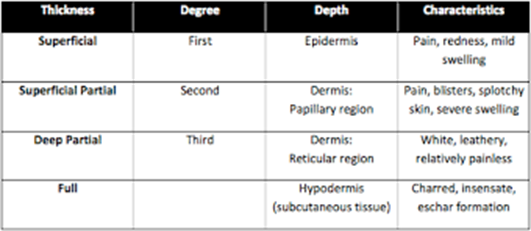A nurse identifies a pressure ulcer after a client had a long, extensive recovery following a surgical procedure. When completing an incident about a pressure ulcer, the nurse should take which of the following actions?
Question the charge nurse about care deficits that might have contributed to the ulcer's development.
Document what the nurse believes was the cause of ulcer development
Include any relevant statements the client made about the ulcer
Document in the client's medical record that she completed an incident report
The Correct Answer is C
Choice A rationale: The nurse should not include any opinions, judgments, or blame in the incident report, as this could be used as evidence in a legal case. Therefore, the nurse should not question the charge nurse about care deficits.
Choice B rationale: The nurse should not include any opinions, judgments, or blame in the incident report, as this could be used as evidence in a legal case. Therefore, the nurse should not document what the nurse believes was the cause of ulcer development.
Choice C rationale: This is important because it provides factual information about the client's condition and perception of the event, which could help in identifying the factors that contributed to the ulcer development and preventing further complications.
Choice D rationale: Documenting in the client's medical record that the nurse completed an incident report is not the primary purpose of the incident report itself. Incident reports are internal documents used by the healthcare facility to track and investigate events. The documentation in the client's medical record should focus on the client's clinical condition, care provided, and response to treatment.
Nursing Test Bank
Naxlex Comprehensive Predictor Exams
Related Questions
Correct Answer is C
Explanation
Choice A rationale: tachycardia is an expected finding in burns patients due to the increase in metabolic rate and fluid loss.
Choice B rationale: a urine output of 25 ml/hr is too low for an individual with burns hence the need for adequate fluid resuscitation. However, this is not a priority sign compared with the difficulty in breathing.
Choice C rationale: difficulty in swallowing is an indicator of airway edema which may compromise the patients breathing and oxygenation which may result in death. Therefore, the healthcare provider should be notified to assess the need for intubation.
Choice D rationale: Pain of 6 on a scale of 0 to 10 is moderate and is expected due to burns and can be managed with analgesics and nonpharmacological interventions.
Correct Answer is ["A","B","E"]
Explanation
Choice A rationale: partial-thickness burns are usually characterized by the formation of blisters as a result of increased capillary permeability resulting in edema formation separating the epidermis from the dermis.
Choice B rationale: wound blanching with pressure is expected in partial-thickness burns due to compromised blood circulation.
Choice C rationale: This is not a typical finding in a partial-thickness burn.
Choice D rationale: this is incorrect since partial-thickness burns involve damage to the epidermis.
Choice E rationale: nerve endings are damaged in partial-thickness burns thus making the area sensitive to touch.

Whether you are a student looking to ace your exams or a practicing nurse seeking to enhance your expertise , our nursing education contents will empower you with the confidence and competence to make a difference in the lives of patients and become a respected leader in the healthcare field.
Visit Naxlex, invest in your future and unlock endless possibilities with our unparalleled nursing education contents today
Report Wrong Answer on the Current Question
Do you disagree with the answer? If yes, what is your expected answer? Explain.
Kindly be descriptive with the issue you are facing.
